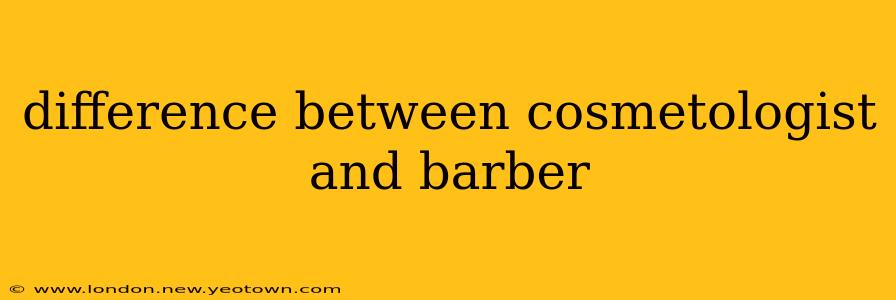Choosing a career in the beauty industry can be exciting, but understanding the nuances between different roles is crucial. Two professions often confused are cosmetologists and barbers. While both work with hair, their specializations and services differ significantly. This article will delve into the key distinctions between cosmetologists and barbers, clarifying their roles and scope of practice.
Scope of Practice: The Core Differences
The most significant difference lies in their areas of expertise. Cosmetologists focus on a broader range of beauty services, encompassing hair styling (cutting, coloring, and treatments), skincare (facials, waxing), nail care (manicures and pedicures), and sometimes makeup application. Their training covers a wider spectrum of beauty techniques.
Barbers, on the other hand, traditionally specialize in men's hairstyling and shaving. While they may offer some hair styling services similar to cosmetologists, their training emphasizes techniques like fades, tapers, and beard trimming—styles often associated with shorter, more structured haircuts. Many barbers also incorporate straight razor shaving into their services.
Training and Licensing Requirements
The licensing requirements for cosmetologists and barbers vary by state or region, but some general distinctions exist. Cosmetology programs typically involve more extensive training, covering a broader range of beauty services as mentioned above. Barbering programs tend to focus specifically on men's grooming techniques, including advanced shaving and hair styling tailored for shorter hairstyles. Both require a state-issued license to practice legally.
Types of Services Offered
Let's break down the typical services offered by each profession:
Cosmetologist Services:
- Hair Styling: Cutting, coloring (including highlights, balayage, and other advanced techniques), perms, relaxers, and various hair treatments.
- Skincare: Facials, waxing (eyebrow, lip, full body), microdermabrasion (depending on licensing).
- Nail Care: Manicures, pedicures, artificial nail applications (acrylics, gels).
- Makeup Application: Often included in cosmetology training, although some may specialize further.
Barber Services:
- Men's Haircuts: Fades, tapers, scissor cuts, and other styles specifically suited to men's hair.
- Beard Trimming and Styling: Shaping, trimming, and styling beards.
- Straight Razor Shaving: A traditional barbering skill involving the use of a straight razor for a close and precise shave.
The Overlapping Area: Where They Meet
There's an increasing overlap between these two professions, particularly in modern salons. Some barbers offer basic hair coloring or styling for women, and some cosmetologists are skilled in men's haircuts. The lines are blurring, but the core specializations generally remain distinct.
Choosing the Right Career Path
The best career path depends on individual interests and aptitudes. If you're passionate about a wide range of beauty services and enjoy creative styling for various hair lengths and textures, cosmetology might be a better fit. If your interest centers on men's grooming, precise haircuts, and traditional shaving techniques, barbering is likely the more suitable choice. Researching local licensing requirements and program curriculums will help clarify your decision further.

